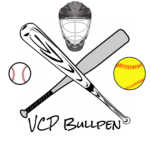Last year it was Mississippi State righthander Will Bednar. This year, it’s Oklahoma righthander Cade Horton.
The new July draft creates plenty of complications in the amateur baseball schedule, but one thing it does provide is a full opportunity for college players to showcase their talents throughout the postseason.
In 2021, Bednar pitched three games in the College World Series, helping the Bulldogs to a pair of wins over Texas and a third against Vanderbilt to win a national championship. In that stretch, he threw 18.1 innings, allowed three earned runs and struck out 26 batters compared to just six walks.
Prior to those outings, Bednar had ranked between No. 38 and 43 on four different updates of the 2021 Baseball America draft rankings. Following his CWS performance, Bednar—then a draft-eligible sophomore—jumped into consensus first round range, finished as the No. 18 prospect in the class and was selected with the 14th overall pick by the Giants and signed for just over $3.6 million.
While Horton’s Sooners weren’t able to win the College World Series—Mississippi swept them in two games and beat Horton 4-2 on Sunday to win its first championship in program history—Horton himself has rapidly moved up draft boards and elevated his stock.
Horton threw four games this June: once against Florida in regionals, once against Virginia Tech in super regionals, once against Notre Dame in the College World Series and yesterday’s College World Series final matchup against Ole Miss. In those four outings, Horton threw 25.2 innings, while allowing eight earned runs (2.81 ERA), with 40 strikeouts (14.0 K.9) and four walks (1.4 BB/9).
While the peripheral numbers are impressive, Horton’s stuff has been electric. In Sunday’s outing he pitched in the 94-97 mph range with a fastball that features plus riding life, and he pairs it with multiple breaking balls—an upper-80s slider that touched 90 in this outing and looked like a double-plus breaking ball at times and a slower curveball in the lower 80s that showed at least average.
In a draft class that has been decimated on the college side (and has started losing pitchers on the prep side as well), Horton is potentially filling a demographic vacuum ahead of the July draft.
Horton’s background makes him a tough player to form a tight consensus on, though most scouts polled by Baseball America in recent days put him in the first or second round based on his performance this June. More cautious teams…
Click Here to Read the Full Original Article at Baseball America RSS…

